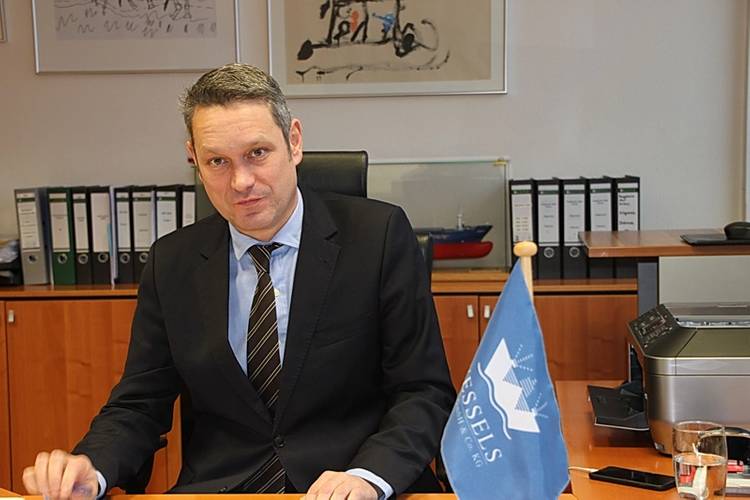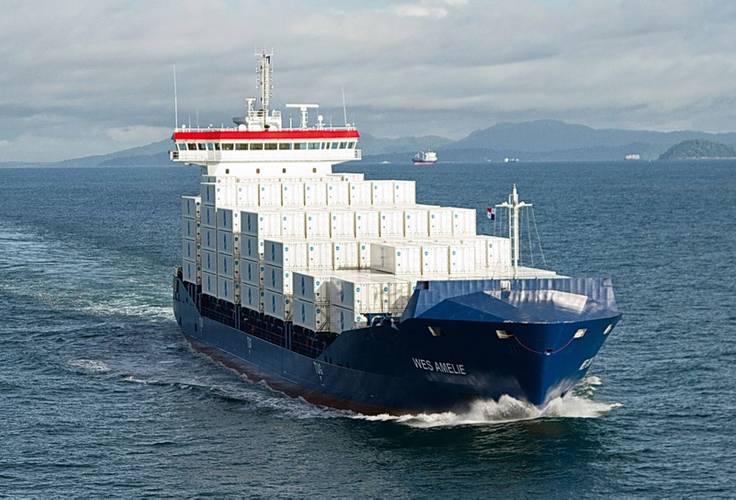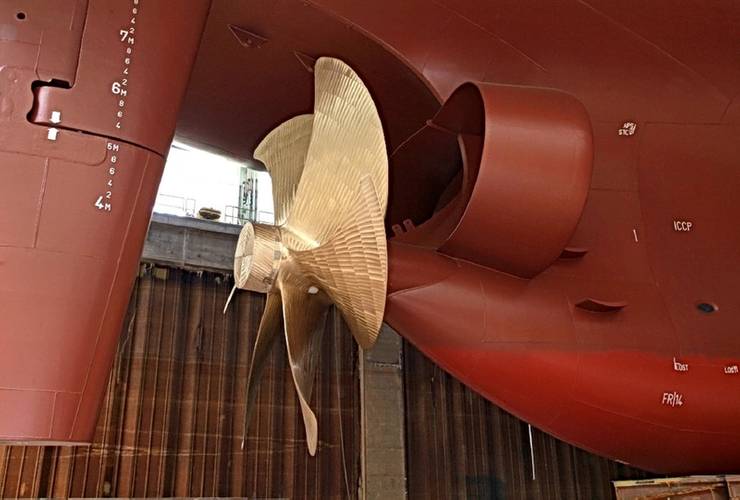International trade relies on transportation by sea, as about 85 percent of the freight volumes are shipped globally by vessels. But while maritime is widely regarded as the most environmentally benign of any transport system, maritime transport can cause a diverse environmental burden: It includes, beside the potential for damages and leaks, the inflow of waste water and, in particular, the emissions of air pollutants. Furthermore the improper cleaning of oil sludge, as well as the transfer of organisms into foreign ecosystems within ballast water.
The reduction of the environmental burden and the improvement of the environmental protection can be called in overview “Green Shipping.” Central to these goals is the reduction of the greenhouse gas emissions (water vapor, methane gas, carbon dioxide, CFC and nitrous oxide). About 2.5 percent of the worldwide greenhouse gas emissions results by the sea transport. Tighter limit values have been introduced in certain areas to reduce the emissions. It is well known that since 2015 the sulfur content in fuel has been limited by 0.1 percent in the European emission controlled areas (ECA’s). The existing fleet of ships must be retrofitted to conform with these thresholds. To do so vessels can be retrofitted with exhaust gas treatment systems or use low-emission fuels instead of using fuel with high sulfur content. Shipping experts expect a further increase of transports by sea as well as more air pollutants caused by vessels. So far the International Conventions as well as the on the EU-level agreed reduction of the greenhouse gases are not lasting enough.
The River Ems-Axis-Region
The Ems-Axis-Region (Leer-Papenburg-Haren) is the second largest shipping location of Germany. Here, the shipping companies demonstrate an extraordinary high economic dynamic. With a number of 43-strong multi-purpose cargo fleet is the Wessels Reederei GmbH, located in Haren at the Ems, one of the biggest German fleet owner of coaster. We had the opportunity to talk to Gerd Wessels, CEO of the Wessels Group, about “Green Shipping”:
Mr Wessels, sustainability in your organization has a very big importance. What do you understand by “Green Shipping”?
Green Shipping for us is to take all measures to protect the environment in shipping. We are focussing on the reduction of pollutant emissions of the used drive technologies and fuels. It is furthermore important to limit the illegal disposal of oil sludge and the reduction of waste disposal on sea as well as the discharge of wastewater. The reduction of emission values and the development of new, as well as the use of alternative drive solutions play a major role for us. In this regard we are continuously searching for new possibilities.
With which measures do you counter the most important environmental impacts?
We have produced continuously during recent years a series of innovations, which ensures sustainability in the shipping sector. One good example is the SkySails-Technology which we (adopted) in 2007 as the worldwide first shipping company supported and promoted – that was an important milestone of Green Shipping.
Additional cooperation in research projects to increase wind supported ship propulsion, e.g. during the starting phase with Mariko ( the Maritime Kompetenzzentrum in Leer) with the topic of innovative Wind Hybrid Coaster followed since that time. The improvement of the ship propulsion with the consequent and optimal power exploitation is consistently in our focus.
Meanwhile we have equipped 11 vessels of the type Rhein-M with Schneekluth-ducts, with this we safe 200 to 400 liter heavy fuel per day per ship (the mounting of the Schneekluth WED & spoilers effects a hitchless and linear water stream to the propeller). Further retrofits with this special fuel saving ducts will be done in the next future.
Our avtivities so far reach from establishing propulsion increasing measures to software launch and energy efficiency increase as well as the development of alternative propulsion systems.
Our latest and newest project for more environmental protection in shipping is the retrofit of our container vessel Wes Amelie (1,036 TEU) for the use with natural gas; this will be the first worldwide retrofit of a container vessel from heavy fuel to natural gas. In cooperation with MAN D&T, and Marine Gas Engineering (TGE), we checked all aspects during the last two years of a possible retrofit of the drive line of our 1,000 TEU-container vessels from heavy fuel to natural gas. We also checked the installation possibilities of scrubber systems. At the end we decided not to use the scrubber, instead the natural gas. Scrubbers have a significantly poorer environmental balance compared to natural gas – and they extend the use of heavy fuel. Furthermore, in regards to scrubber, the use of open-loop and closed-loop systems in different national shipping areas is not clear. Therefore, from our point of view, the future course shall be alternative fuels like natural gas.
But to finance such a retrofit for the use of natural gas is the most important challenge. It is much more expensive and complex than the installation of a scrubber system. In addition to ones own equity, external financial support is necessary – at least with the first retrofits.
If I understand you correct Wes Amelie will not be the only vessels which you are going to convert?
Right. We paid a lot of attention to achieve a high multiplier effect, in other words: possible follow-up projects can benefit from this first conversion. Because of this we choosed our Wes Amelie which is a 1,000 TEU feeder vessels. This young vessel has been built in large series. They are mostly navigating in the European feeder traffic, and 16 identical sister ships are available for such a natural gas conversion. All these vessels feature the same main engine type from MAN which have been converted succesfully in numerous landside gensets towards the use of natural gas. Thus, valuable practical experience and know-how could be gained in advance for our following conversion. I am convinced that vessels from other shipping companies can benefit from the experiences we will have. Future conversion will be profitable with the possible increase of quantity. In general, further gas conversion projects may substantially reduce the budget. A financial support could be obsolete under these parameters in the long-term.
The existing LNG-infrastructure, also in highly frequented ports, is insufficient for supplying seagoing vessels. In your opinion, what must be done to reduce this situation?
The expansion of natural gas for the shipping industry suffers from a – this can be seen also in other areas – known phenomenon: the so called “chicken-and-egg-problem.” In other words: without an actual demand there will be not a robust LNG-infrastructure and vice versa. The financial incentives for both sides are too small and the entrepreneurial risks are too high to become active. Particularly at the tight state of the market, and the insufficient LNG-infrastructure, no one of the owner is prepared to take the full investment risk. Our actual gas project is therefore intended to create important impulses for the formation of a strong LNG- demand structure. We are convinced: the gradual modification of vessels, which are already in service will stimulate the demand for natural gas and also the urgently necessary extension of the LNG-infrastructure.





















